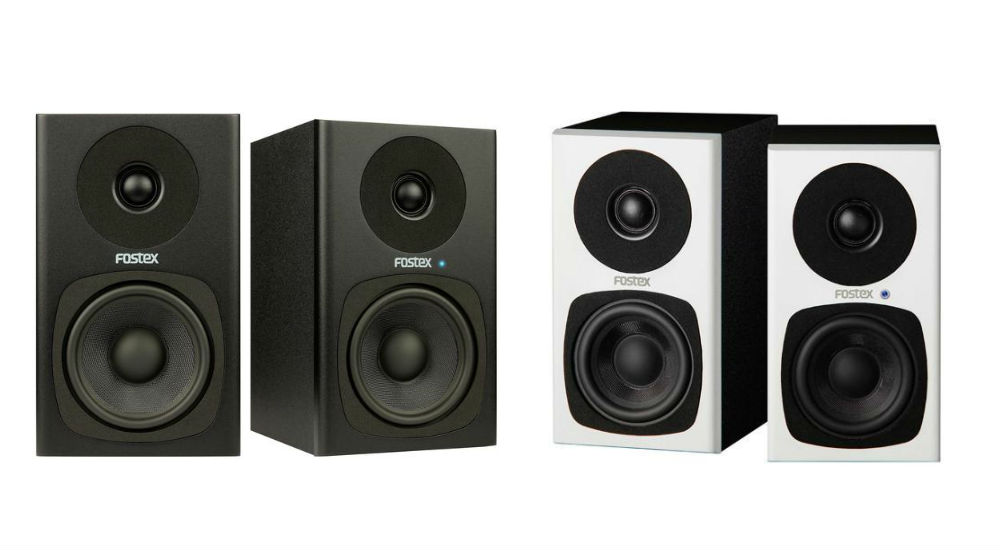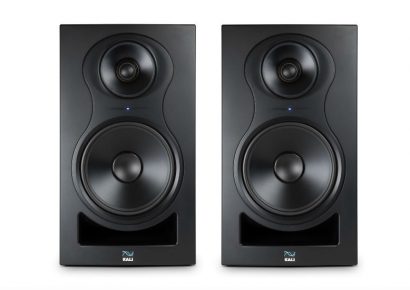The brand also produce a gamut of full size studio grade gear, and importantly, have a strong history of speaker production. Fostex has now launched a series of extremely well priced active studio monitors, including the diminutive but gutsy hyper-near-field PMO.3dH and the medium-compact PM0.4c.
Both of these options make a compelling case to the producer wanting to emancipate their ears from working exclusively on monitoring headphones, with each model meeting slightly different needs. Akin to the tiny house movement, there has been a recent trend in modern music for producers to compose from hyper-mobile means – take The Internet’s Steve Lacy or Tokyo-based avant-garde artist H. Takahashi for example, both reputed for their incredibly austere iPhone based setups.
While there is no doubting the production chops of these two, there is little doubt that these two projects would have inevitably passed through a set of monitors at some point on their way to the streaming service. There are simply certain tasks that headphones can’t perform and for that a set of monitors are required. Few out there are as perfectly positioned for this transition into the open air as the Fostex PM0.3dH and PM0.4c, two monitors who are well-priced, well-voiced and take up little in the way of expensive real estate.
The larger model, the PM0.4c, is a two-way speaker with bass reflex porting and enclosed in wood. The model supplied for review sports a white fascia, with a subtle LED status light. These speakers are also offered in a black colour-way, but I found the white to pop pleasingly once installed adjacent to my gear. A handy auto-standby mode switch is located on the back of the right speaker, as well as a sublimely usable volume knob, with accurately engineered detents. Input is via RCA pin jack, and a cord is even supplied.
The PM0.4c’s low range driver is a 4 inch cone speaker, with a reported low end of 40hz, which I found delivered faithfully and rendered robust bass convincingly, which really gives you something to chew on. The high range driver is a ¾ inch soft dome tweeter, which offers sparkling punch up to 20kHz – staccato high hats are reproduced with sublime precision. Having said that, these monitors are non-partisan, and worked nicely with twinkly emo guitars, throbbing deep house and smooth R&B.
Stereo imaging on these puppies is excellent, but does benefit from putting a small amount of work into room setup. In particular raising the tweeters to ear level and ensuring an equilateral triangular geometry is achieved between the monitors and the listening position.
On the other hand, the smaller PM0.3dH packs a whole lot of fun factor into a diminutive housing. In this age of working from home I can certainly see an argument for sloughing off some of the on-desk equipment in favour of increased workstation real estate. Whilst housed in very svelte wooden cabinets these speakers might be mistaken for featherweights, but they punch heavy. The 3 inch fiberglass woofer and ¾ inch soft dome tweeter honestly produce their claimed 110 Hz – 40kHz range, and if lower lows are needed they could be paired with a sub. Indeed, they would tie-in beautifully with Fostex’s active 5” sub, the PMSUBmini2.
One added bonus for speakers of this size (and an area in which both the PM0.3dH and PM0.4c truly excel) is in regards to low-mid clarity and quick recoil across the time domain. Some call it punchy, but it’s more than that. It’s the ability to reset quickly between rapid (and often full frequency) transient events, leaving you free to make vital tonal shaping decisions without a bunch of lingering sub-frequencies or sluggish, lagging woofer excursion to contend with. This goes a long way to helping attain the best sonic character possible out of your program material.
As a complementary reference speaker for this kind of application, it would be hard to find one better at this price point and is worth the cost of investment alone. Your snares, guitars and even bass guitars and synths will thank you for it.
Rated output is 15w low and 15w high, which generates abundant volume considering the minimalist enclosure- with ample projection and the ability to muster an impressive amount of low end considering their small stature.
Given their demure sizing and ability to take up little in the way of desk space, I could see these doubling as an awesome desktop or broader media speaker for everyday use, but with the added flexibility of serving as a fully functional near-field studio monitor for whenever the situation calls for it. Their ultra compact size would also make them a good candidate for travel or working on location.
Stereo imaging is a serious strong point of the PM0.3dH – the sweet spot is somewhat tight, but once you’re in it, well, you’re in it! Also worth noting that bright transients are handled with divine poise, and many different music types are produced with a flat sonic profile. Some makers of small speakers artificially pump the low-end, rendering them unusable for mixing, not so with the PM0.3dH. It’s a true, trustworthy voice in the studio.
No doubt, the larger PM0.4cs and the smaller PM0.3dHs are superlatively well priced for speakers of their type – plus, if they’re not big enough for you, Fostex even offer a larger PM0.5d monitoring option as well. Their accurate sonic qualities make a convincing argument for small effective small room studio monitoring solutions. Their tastefully minimal aesthetic also make them a suitable option for general home listening, and would do them well positioned on desks, bookshelves, or in the bedroom. In the end, a good speaker system is one that sounds good to you. Both of these systems sound good to me.
Check out the full Fostex studio monitor range via the company’s Australian website.



